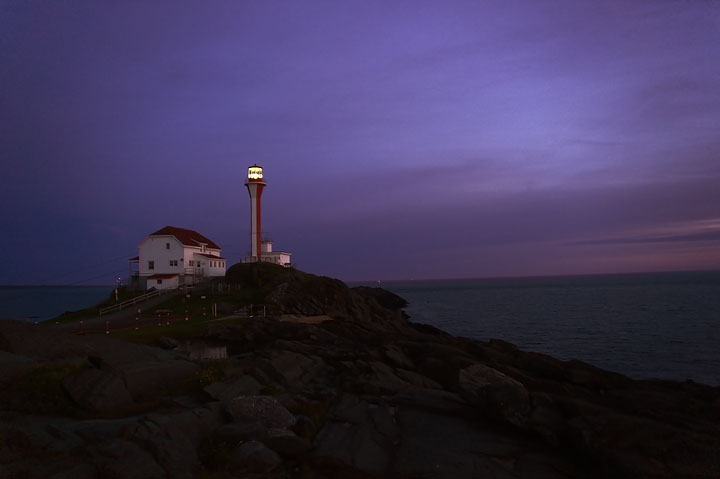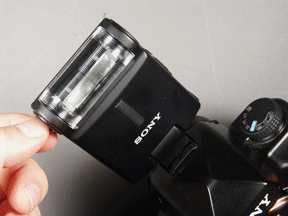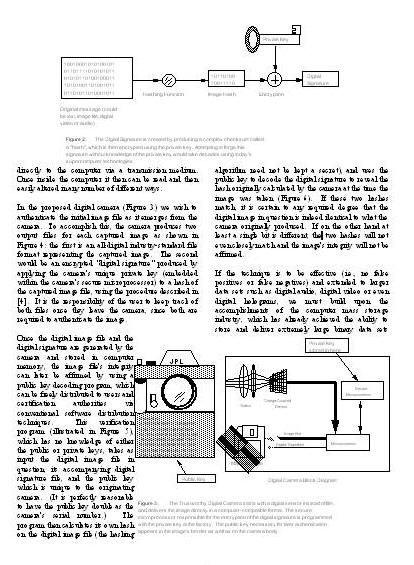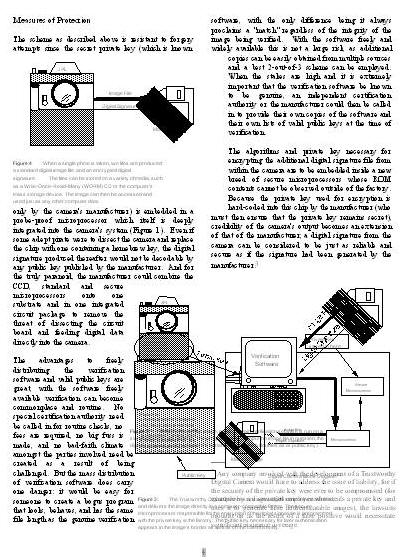











The Friedman Archives Newsletter
September 2009
In this issue:
A Postcard from Nova Scotia

The Nova Scotia, Canada seminar took place in early August, which was a joy. Not only was it extremely well-received, but also Carol and I got a chance to see the province - something that we had always wanted to do. We made so many wonderful friends and got to tour a beautiful location (and eat a lot of lobster!) Some gratuitous pictures are below.
|
|
|
|
|
|
|
|
Day 2 Attendees |

|
|
|
|
Let's see... Good light? Check. Strong composition? Check. No distracting background? Check. This place makes getting great shots easy! :-)
More on that Lighthouse Shot
Scroll to the top and you'll see a very competent image of a lighthouse at dusk. But it didn't look like that out of the camera. Truth be told, to get it to look that good I had to shoot RAW and then post-process. What did it look like before?

Just look at all that vignetteing in the corners! This was because my Zeiss 24-70 lens (the one that got scratched last month) was still being repaired. On this trip I used the old Minolta 24-105 lens on my A900. That's OK; post-processing can cure all sorts of optical ills like vignetting, pincushion distortion, and chromatic aberrations. :-) In this case, I used Photoshop to eliminate that artifact by lightening the corners.
Here's what else I did in post-processing:
Selected just the sky. Made it brighter, added a little red.
Selected everything that wasn't the sky. Used the curve tool to brighten the blacks. Used color balance to make things a little less dreary.
Cropped a little.
The secret to hiding your image manipulation is to do everything in small amounts. A collection of small tweaks will look more impressive and more natural than any single large tweak. (A restriction in space prevents me from describing, step-by-step, how all of those things were done. If you'd like a rundown on how to do some of these things, check out the chapter in my book which describes how to use the software that came with your camera.)
New HVL-F20AM flash and a DIY (Do-It-Yourself) IR Filter Switch
 Oh happy day! My biggest complaint about the A900 -
mainly, its lack of a pop-up flash for triggering wireless - has
essentially been solved by Sony, who has just started shipping its
HVL-F20AM flash which is actually more versatile than a normal
popup flash. No longer must I attach a big, heavy, and
expensive "58" flash just to control my wireless flashes!
Furthermore, unlike a purely infrared wireless flash controller
(the usual manufacturer solution to the problem of triggering
wireless flashes without a built-in flash), the "20" flash can do
fill-in flash as well, something I love to use when shooting
portraits outdoors.
Oh happy day! My biggest complaint about the A900 -
mainly, its lack of a pop-up flash for triggering wireless - has
essentially been solved by Sony, who has just started shipping its
HVL-F20AM flash which is actually more versatile than a normal
popup flash. No longer must I attach a big, heavy, and
expensive "58" flash just to control my wireless flashes!
Furthermore, unlike a purely infrared wireless flash controller
(the usual manufacturer solution to the problem of triggering
wireless flashes without a built-in flash), the "20" flash can do
fill-in flash as well, something I love to use when shooting
portraits outdoors.
I've been playing with this flash for about a week, and the more I experiment, the more I like it. Here's what I like:
Things that aren't so remarkable:
That's OK; I'm actually glad that Sony designed-in the wide-angle diffuser, for I was able to take the flash apart and affix an infrared filter to that diffuser, turning the 20 into the world's most convenient and versatile Infrared Wireless Flash Controller on the planet. (Recall from my books that I have always advocated attaching a piece of exposed and developed color negative film to the pop-up flash to prevent the wireless flash controller signals from ever appearing in the shot. This is essential if you're shooting up close and wide open.)
So now, a twist of a knob will turn the 20 flash from a nice little fill flash to an infrared wireless controller! I explain how to do it in detail (plus provide a more thorough review of the 20 flash) in my next article to be published in Photoworld, a magazine which I highly recommend. (In fact, you can click here to get a discount on a subscription!).

Follow Up On...
Here's where I get to follow-up on old topics which I discussed but then left you hanging.
I take back every negative thing I ever said about Sony. Not only did they quickly fix my Zeiss lens under warranty, but they even paid for the shipping both ways - I'm a very happy camper! Suffice to say that my repair experience was significantly improved over the last time - Sony has improved.
Recall a few months ago I sent out a yell for help regarding reading a 15-year-old floppy disk that was written on a Mac. Kim Drake came to the rescue, saying that her parents still had the same Mac, the same Operating System, and the same version of Word that had created the file. Bingo! I sent her the floppy and a few weeks later (after she went to visit her parents) she emailed me a .pdf file which she created from the machine.
Did the files look the same? Of course not!!! Have a look at a sample page below - the left one from a printout I had made 15 years ago, and the right one from Kim's .pdf file:


Original printout pdf file from Mac
Not quite there. Illustrations were not positioned properly, and new unexpected artifacts had surfaced. She also sent me the original, untouched .doc file that was on the floppy, and as one might expect, it looked even worse. Fonts were changed, the illustrations had even more artifacts that weren't supposed to be there, and many, many of the illustrations were out of order (and most were superimposed on top of each other!). Re-arranging the placement of the illustrations was possible, but it would have taken hours to make the document look identical to my original printout:


So, once again, bit rot is only one of the problems of ensuring your valuable data can be read in the future. Evolving software versions and tools is another one that cannot be ignored. Even if you think you have the same hardware and software that created the file, that doesn't always mean that the recovered file will look the same as the original!!
Seminar Updates
The Nashville seminar is right around the corner (Sept. 12-13, 2009), then comes Manhattan October (17-18), and then Southern California (November 14-15). Sign yourself up before it's too late! Or better yet, learn more about the seminars and register your city to be next on my seminars page!
And yes, I'm writing new books for all the new Sony models, starting with the A330/380, and then I'll update the A900 book to include the A850 and the new "20" flash, then the 500/550. Sleep? Who needs sleep?
Until next time...
Yours Truly,
Gary Friedman
Next Newsletter - October, 2009 Subscribe to this Newsletter
Previous Newsletter - July, 2009 Newsletters Main Page
Back to the Friedman Archives Home page